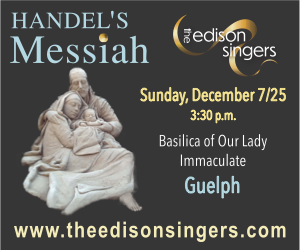Welcome to the Modern and Contemporary section of our DISCoveries reviews. To skip ahead to a review, simply click the album screenshot below of the review you'd like to read.
|
Shostakovich with the Royal Liverpool Philharmonic Orchestra; Vasily Petrenko |
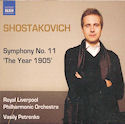 |
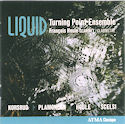 |
|
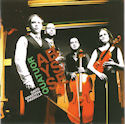 |
|
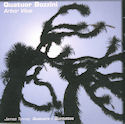 |
|
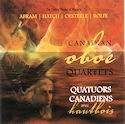 |
 Shostakovich - Symphony No. 11
Shostakovich - Symphony No. 11
Royal Liverpool Philharmonic Orchestra; Vasily Petrenko
Naxos 8.572082
This is remarkably fine performance, superbly recorded.
The first performance one hears is often imprinted as the way to perform a certain work. I first heard the Shostakovich 11th symphony on an EMI recording by André Cluytens and the ORTF orchestra. Made in the presence of the composer on May 15, 1958, it is, by definition, unerringly faithful to Shostakovich’s wishes and is my ideal (available in stereo on Testament SBT1099). 1958 was a good year for the work as Stokowski made his celebrated recording for Capitol in Houston exactly 51 years ago this month and another Russian performance under Stokowski from 1958 was issued. Since then there have been a score or more versions that have been listened to and filed away.
Titled “The Year 1905”, this symphony depicts the events of Bloody Sunday when more than 200 peaceful demonstrators were massacred by Czarist soldiers outside the Winter Palace in St. Petersburg. From the very opening bars, Petrenko perfectly shapes and balances the composer’s mood picture of the inanition of the multitude leading to the second movement during which the pregnant stillness is devastatingly broken by the deadly attack. All is quiet again and pain and sorrow lead to bitter resolution, presaging the revolution to follow 12 years later.
Petrenko does far more than get it right. From manifest compassion to total brutality, he conducts from the inside, exposing the composer’s sources of inspiration, his Muse.
The state-of-the-art recording is the best yet, making this CD a must-have for audiophiles and the composer’s following.
This is the first instalment of Naxos’s announced complete cycle with Petrenko and his orchestra, presaging an exciting project.
Bruce Surtees
Francois Houle; Turning Point Ensemble; Owen Underhill
ATMA ACD2 2394
Canada has produced a vibrant cohort of clarinettists who specialize in new music; a short list should include Robert W. Stevenson, Lori Freedman, James Campbell, Joaquin Valdepeñas, André Moisan, Jean-Guy Boisvert and François Houle – the featured soloist on this recent disc by the Turning Point Ensemble, conducted by Owen Underhill.
First up is Vancouver composer John Korsrud’s Liquid. Houle’s virtuosic technique is highlighted throughout, from the opening highly rhythmic figuration, which gradually disperses into a more fragmented ensemble texture. It resembles a concerto grosso, with an extended slow section featuring a sparsely-accompanied solo clarinet - replete with the seemingly obligatory multiphonics - gradually returning to the opening rhythmic figurations.
Next is Schrift, by Quebec composer Yannick Plamondon. The liner notes inform us that Plamondon, like Eric Satie, has placed enigmatic texts throughout the score, such as “The mechanistic noise of a language that seeks itself.” Plamondon’s inventive use of percussion sounded “mechanistic” I suppose, but the piece ended before I finished puzzling over that one.
The third work on the disc – Concerto – features Houle as both soloist and composer. The title is in keeping with the original 18th-century convention of an opening section, or ritornello, introducing the soloist. Like Korsrud’s piece, Concerto is a three-part single movement: a slow meditative section framed by more vigorous opening and closing movements.
Kya (1959) by Italian composer Giacinto Scelsi, is the earliest work on the disc, and one of the most intriguing, using texture and timbre as compositional determinants. Scelsi, an Italian aristocrat, lived in Rome, yet the piece seems more acquainted with John Cage, Harry Partch, Indian or even Nepalese classical music than the stylistic tendencies of Scelsi’s European contemporaries.
Overall, the sound is crisp, clean, and well-engineered. Underhill has done well guiding the Turning Point Ensemble – a highly skilled group of players on a par with Houle’s virtuosity - through some very complex instrumental textures.
Tim Buell
Quatuor Abysse
XXI XXI-CD 2 1589
This is a fabulous recording showcasing the breathtaking emerging Quebec string quartet Quatuor Abysse. Simon Boivin (violin), Melanie Charlebois (Violin 2), Jean-Francois Gagne (viola) and Sebastien Lepine (cello) are four young string players who play with a sensitivity and maturity beyond their collective years and musical experience.
The cohesiveness and tonal magic they create in interpreting the works of Argentineans Constantino Gaito, Alberto Ginastera and Astor Piazzolla culminate in an unimaginable musical truthfulness. All three composers draw on both their European classical traditions and Argentinean folk music at different degrees. Gaito is more of the romantic stylist, though his String Quartet No. 2, op.33 draws heavily on the pentatonic scale. In contrast, Ginastera's String Quartet No. 1, op. 20 is more chromatic and rhythmic in nature. Piazzolla's work needs no introduction – L'Histoire du Tango is a string quartet arrangement by Jean-Francoise Gagne of the original flute and guitar duet. The four part work chronologically and musically outlines the transformation of both the tango as an art form, and Piazzolla as a composer.
If you listen to only one recording this year, let it be this one. I hope Quatuor Abysse continues to develop musically. Their astute musicality combined with an uncanny sense of respect for the compositions, the composers and themselves as performers makes for unequivocal and unforgettable listening.
Tiina Kiik
Quatuor Bozzini
Quatour Bozzini CQB 0806
(www.actuellecd.com)
This recording by the Quatuor Bozzini of the American–Canadian composer James Tenney is essential for anyone interested in experimental music of the 20th century. Superbly recorded at Radio Frankfurt by tonmeisters Christoph Classen and Udo Wustendorfer with the assistance of sound engineer Thomas Eschlen, the two CD set brings together all of Tenney’s music for string quartet, as well as works for string quartet and additional instrument.
James Tenney composed for string quartet throughout his life, and so this release provides an excellent overview of his compositional interests throughout his diversely productive career. From his lifelong interest in just intonation and other tunings, to his use of electronics and computers, his systems of stochastic development, his constant desire to engage in an exchange of ideas with other members of both the music community and the wider society of artists from all disciplines, this collection brings forward all of these interests with great clarity and passion. The playing is both accurate (and I can tell you that as a performer who worked with Jim for over twenty-five years, this is no small accomplishment), and sensitive to the sensuality of Tenney’s music. The Bozzinis are ably assisted by percussionist Rick Sacks, pianist Eve Egoyan and contrabassist Miriam Shalinsky.
Robert W. Stevenson
Gallery Players of Niagara
Gallery Players GPN09001
James Mason, principal oboe of the Kitchener-Waterloo Symphony for the past twenty years, is joined by his distinguished colleagues Julie Baumgartel on violin, Patrick Jordan on viola and Margaret Gay on cello in this intriguing recording by The Gallery Players. The ensemble’s original concept for this project was to commission Canadian composers to create works derived from Mozart’s Oboe Quartet in F major K370 in celebration of the 250th anniversary of the divine Amadeus. Of the composers on this disc only Peter Hatch fully accepted this challenge, albeit in quite a perverse way. His Wiki Mozart superimposes a distracting tape collage upon what seems to be a quite sensitive performance of Mozart’s work, with the droning voice of Gertrude Stein thrown in for no good measure. You can replicate the effect quite easily in your own home by turning your television, CD, DVD and radio on all at once. James Rolfe’s Oboe Quartet, while not in the least bit derivative, echoes Mozart’s refined style in its carefully wrought artistry and exceptional architectural balance. Michael Oesterle’s Sunspot Letters finds its inspiration in the solar observations of Galileo Galilei, juxtaposing frenetic, highly ornamented oboe passages upon the inexorable cosmic pulsation of the string trio to great effect. The studied monotony of John Abram’s Oboe Quartet is derived from an earlier operatic project and while agreeably melodic is the least relevant and most woefully over-extended part of the program. The excellent acoustic of Toronto’s Humbercrest United Church is vividly captured in these exceptionally sensitive performances.
Daniel Foley



